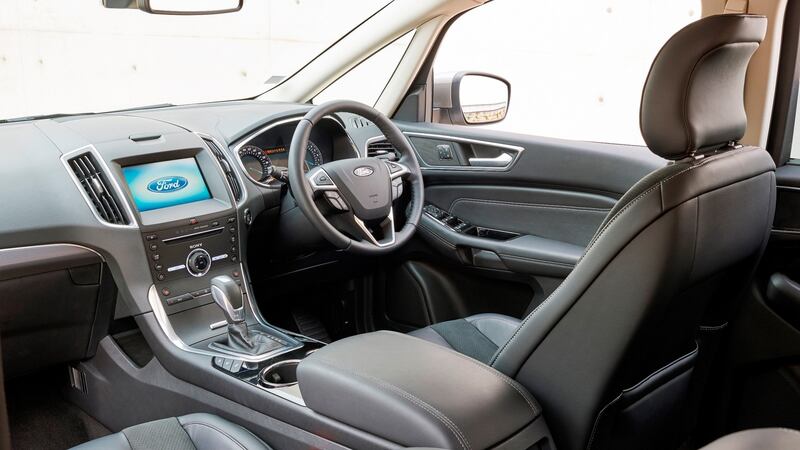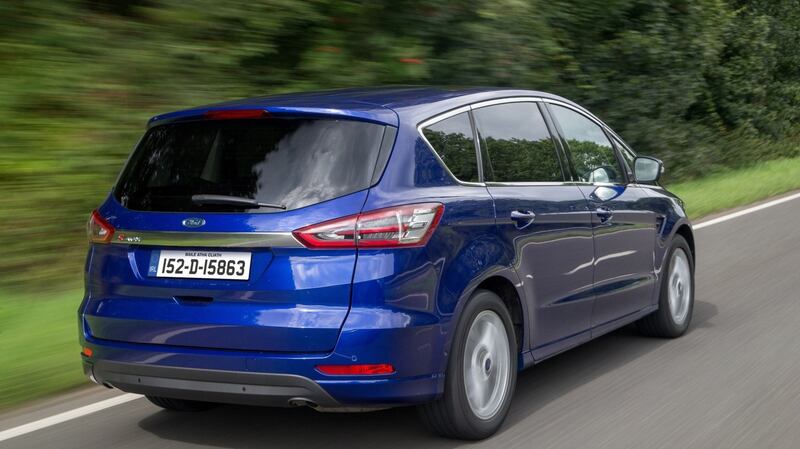We need to talk about Vingale. Ford has revived the long-forgotten name of one of Italy's great car design houses, the carrozzeria that helped to build the legends of the Italian sports and racing cars, because it wants to get back at the premium-badge Germans.
For close to a decade now, Ford (along with Peugeot, Citroen, Opel and others) has become something of a "squeezed middle" – sales of its mid-market cars, such as the Mondeo, have slumped as buyers have looked either down (towards the likes of Hyundai or Kia, when Hyundai or Kia were still actually bargain brands) or up, to the likes of BMW, Audi or Mercedes-Benz.
Mondeo sales especially have suffered, falling from multiples of hundreds of thousands to tens of thousands. Vignale is meant to, partially, reverse that trend, taking standard Mondeos, S-Maxes, Galaxys and the new Edge SUV and adding ritzy hand-stitched leather, special paint, greater refinement and the lure of on-call “concierge” services.


It makes almost perfect sense – give buyers a premium buying and owning experience and they’ll abandon the Germans and come flocking back to Ford, right?
Um, not quite.
Humble
As yet, we haven’t driven a Ford Vignale vehicle that didn’t feel just a tiny bit comical. All the extra spangly chrome and nice seats count for naught when you’re still driving a car which can be bought as a humble LX or Zetec, and the likely depreciation curve makes you feel as if you’re standing on the peak of an Olympic ski-jump.
It’s just very hard to make a Ford, any Ford, feel as if it’s worth €50,000. Hard, but as it turns out, not impossible.
While the S-Max will be getting a Vignale-fied version, this isn’t it. This is an S-Max in relatively common-or-garden Titanium trim (the trim from which Ford wants upwardly mobile customers to migrate to Vignale) and lacks the chunkier grille and extra chrome of the more expensive model.
That said, it’s not a cheap car. Thanks to almost €6,000 worth of extras (adaptive lights, beefed-up stereo, big glass roof and more) this test car clocks in at a hefty €49,270. That’s a lot of money, and a lot of money for a Ford.
The thing is that this S-Max feels worth it. Not instantly, perhaps. Yes, it's a good-looking car (both by MPV standards and, indeed, by any general yardstick) and looks especially good in the handsome "Deep Impact" metallic blue paint (not sure why they named it after a Morgan Freeman-starring disaster movie, but hey. There's also a "Shadow" black and a "Frozen" white, so fans of Disney singalongs and obscure Alec Baldwin comic book movies will also be happy). It's possibly the only high-roofed seven-seater that actually looks visually tempting.
To drive, it remains the only large, seven-seater that offers anything for the keen driver. As with the Mondeo, with which it shares a chassis, the S-Max has become a little flabbier and looser in feel compared to the older version (haven’t we all, darling?) but it seems a less acute penalty in the bigger car than in the saloon. The steering remains pleasingly sharp and beautifully weighted, the body control and ride quality in near perfect harmony. Make no mistake, if you have to go for a spacious family car, and still want to enjoy your driving, this is the only game in town.
Inside, it’s better still. Yes, there are a few too many patches of big, plain, flat plastic that look a little cheap, but the rest is just really good. The seats are little short of excellent – far more comfortable and supportive than even the chairs in the vaunted Mondeo Vignale. I’m a big chap with a bad back and regularly make lengthy journeys, but I would have happily made space in my lounge at home for the S-Max’s front seats, so pleasant are they.
Out at the sides of the dash, around the air vents, are pleasing splashes of chrome, and if the instruments (part-digital, part-analogue, all-frustrating) and the central touch-screen (infuriatingly fiddly at times) are every bit as bad as they are in the Mondeo, then at least the S-Max doesn’t seem to suffer from the build quality issues we noted in early versions of its related saloon. Assembly, fit and finish seem tight and taut, and there was nary a squeak or a rattle to be found.
In the middle row, there is the required space for three large child safety car seats in line abreast (an increasingly vital requirement for many families) and acceptable comfort for adults. Having three individual seats in the back means an inevitable bit of shoulders rubbing up against door panels if the car is full of grown-ups, but in the more expected role of child transportation, the S-Max excels.
In the third row, you’ll have to juggle around the position of the centre row to achieve enough legroom for those sitting in the boot, but they are useable seats (much more so than you’d find in an equivalent seven-seat SUV or a smaller MPV) and they fold very easily up and down, with a single-handed movement that comes with a little practice.
Bargain
There are also buttons in the boot to electrically release the middle row seatbacks, which then tumble forward (as long as you’re parked on the flat) and the S-Max is genuinely, properly practical. The boot volume is 700-litres in five-seat mode, loaded up to the windowsills, or a colossal 2,020-litres with all the rear seats folded flat. Even with seven seats occupied, you can squeeze in 285-litres although, as with all MPVs, if you’re regularly carrying seven people and luggage, you’ll have to get a roof box.
You shouldn’t bother investing in the 180hp 2.0-litre TDCI diesel, though. While it should be the headline engine of the S-Max range, it just never quite feels as if it’s giving of its all and, to be frank, you may as well save yourself €3,000 and get the 150hp version. It’s a refined unit, to be fair, and economy isn’t bad, working generally out at around 40mpg, but the extra 30hp just never seems to make its presence properly felt, so just don’t bother.
In fact, going for that 150hp Titanium model, which retails for €40,685, makes the S-Max seem an even better purchase. Shorn of the extra expense of that engine, and frankly I could live without the panoramic roof, the stereo upgrade and the adaptive headlights too, the S-Max suddenly starts to look not merely like a car which can bear the weight of is cost, but actually like a bargain.
Space, comfort, quality, handsome looks and an engaging chassis? That’s been the magical Ford combination for three decades now, and one which still works perfectly when Ford remembers to put it together in the right order.
Tilting at BMW and Audi is, frankly, beyond the skill set of the Ford brand. But creating a genuinely desirable, great-to- drive family car? Practically a Ford speciality . . .
Lowdown: Ford S-Max Titanium 2.0 TDCI 180
Price:
€49,270 as tested, range starts at €35,860
Power: 180hp
Torque: 400Nm
0-100kmh: 9.7sec.
Top speed: 210kmh
Claimed economy: 5.0-litres per 100km (56.5mpg) CO2 emissions: 129g/km
Motor tax: €270












